A muted sweep of green can turn the most overlooked passage into a micro-sanctuary: designers note that the hue’s shorter light-wave length literally helps eyes relax, lowering stress on entry and exit points Verywell Mind. In 2025’s palettes, softer sages and richer olives dominate because they marry nature’s calm with contemporary verve, letting hallways feel like an easy, oxygen-rich pause between rooms Homes & Gardens House Beautiful. Read on for twenty ideas—each concise, practical, and ready to coax your own green hallway to life.
1. Sage Green Hallway for Instant Calm
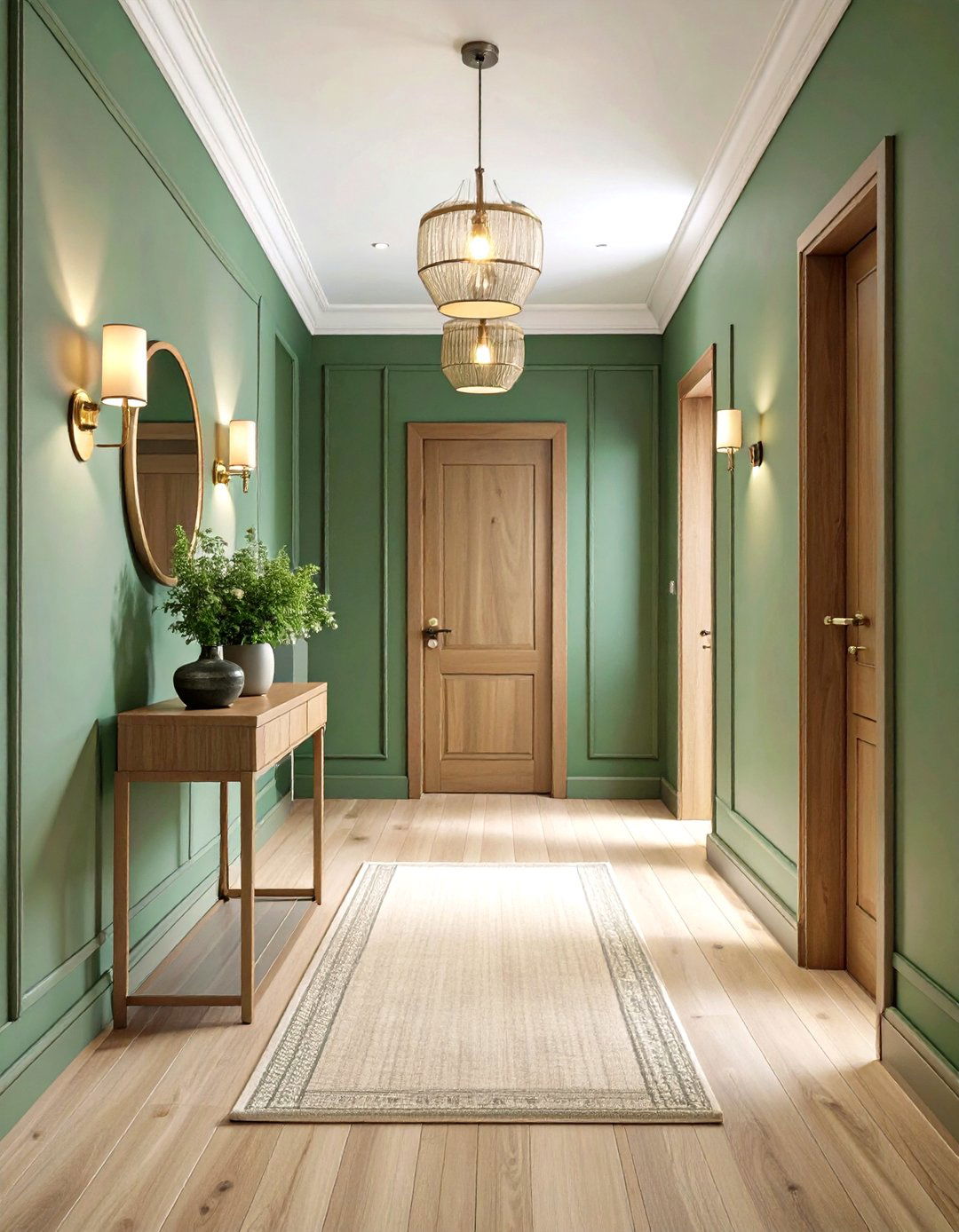
A delicate sage green hallway greets guests with spa-like serenity while disguising scuffs better than white. Studies in color psychology show green’s association with nature lowers heart rate and promotes mental balance Verywell Mind. Current trend reports highlight mid-tone sages such as Saybrook Sage for their neutrality and adaptability to warm or cool accents Homes & Gardens. To increase the softness further, choose a matte finish and pair with woven baskets or linen runners whose pale fibers echo the wall color. A slim console in unfinished oak continues the organic mood, while brushed-nickel hooks keep visual noise low, ensuring the sage remains the star of the scene.
2. Deep Forest Green Hallway Cocoon
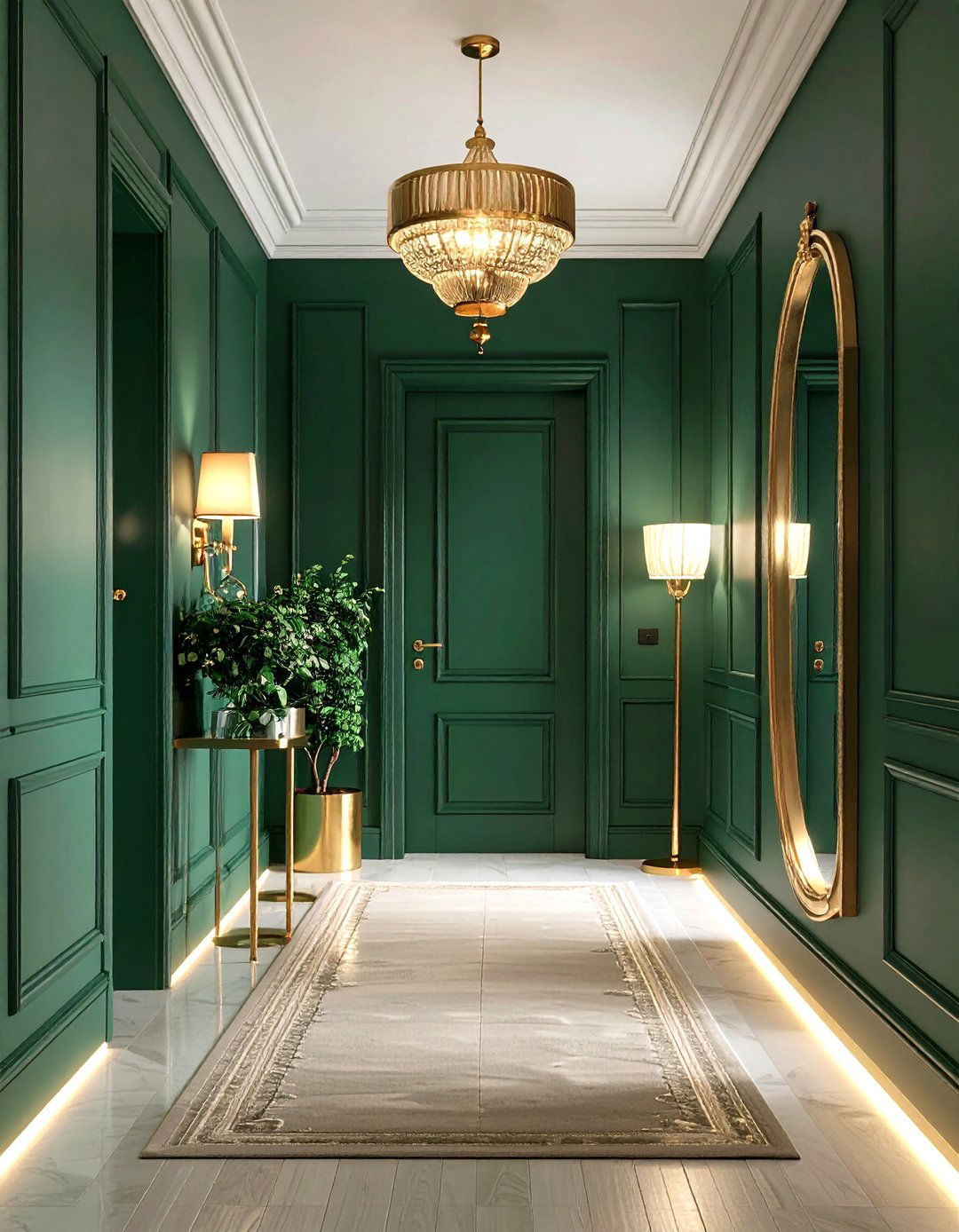
Unlike airy pastels, a deep forest green hallway can cocoon narrow spaces, creating the same immersive calm found in woodland shadows. Designers tout moody greens for their ability to hide architectural quirks and lend instant sophistication House Beautiful. Add low-level LED strips under the skirting to stop the shade from feeling oppressive, and hang a single oversized mirror opposite any natural light source to bounce brightness back into the corridor. Because darker greens have strong pigment, select scrubbable paint to withstand bumps, and introduce brass-tipped umbrella stands for a glint of contrast that reads classic rather than flashy.
3. Two-Tone Green Hallway with Wainscoting
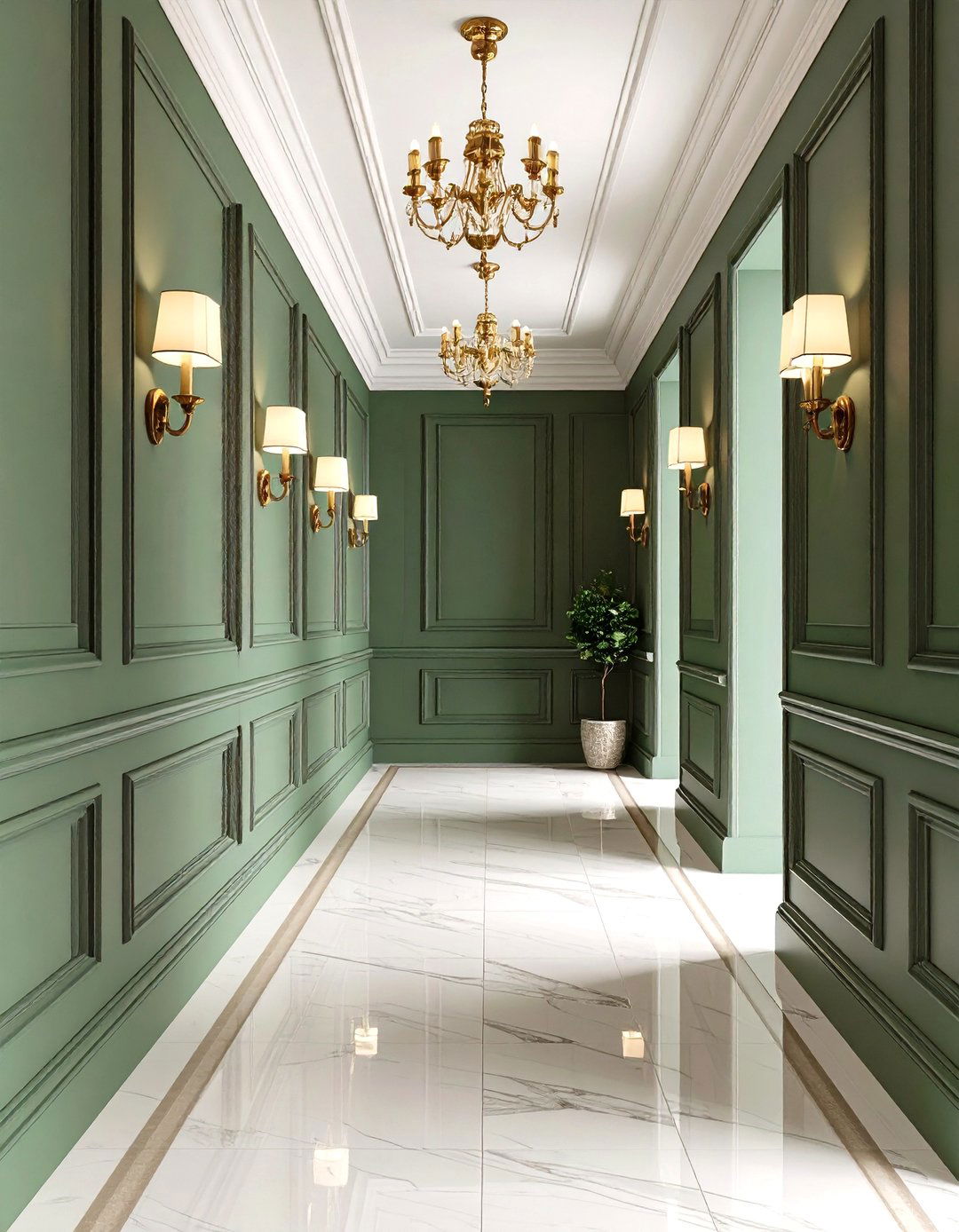
To add architecture where none exists, paint the lower third of the walls and the wainscot a saturated olive while leaving the upper portion a lighter pastel green. Wainscoting instantly supplies depth and protects busy passages from daily knocks, and painting it darker keeps proportions grounded The Spruce Pinterest. A slim dado rail marks the color break and acts as a natural art ledge for postcards or mini florals. Finish the look with antique brass picture lights aimed downward—the two-tone effect draws the eye horizontally, visually widening even the tightest hallway without adding bulky furniture.
4. Glossy Green Hallway Doors and Trim
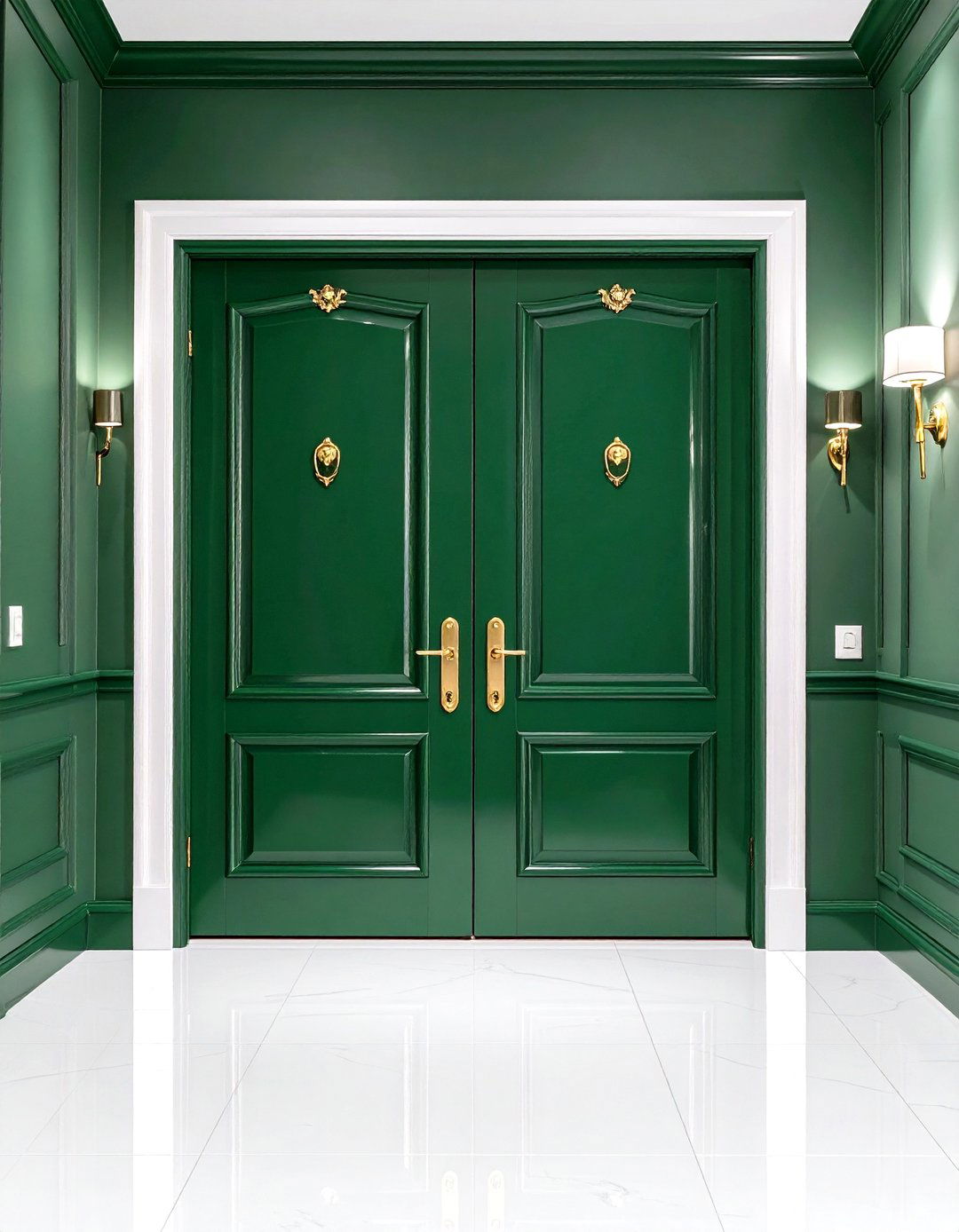
Consider dressing every door and trim board in a high-gloss spring green to transform utilitarian boundaries into jewel-box accents. Reflective finishes literally double available light by bouncing rays back into small foyers, a trick interior pros repeatedly rely on for dim entryways House Beautiful. Keep walls themselves a satin or eggshell version of the same hue for cohesion, and swap dated hardware for unlacquered brass that will patinate over time. The result feels polished yet playful, as if each doorway were a lacquered treasure chest leading deeper into the home.
5. Botanical Green Hallway Wallpaper Statement
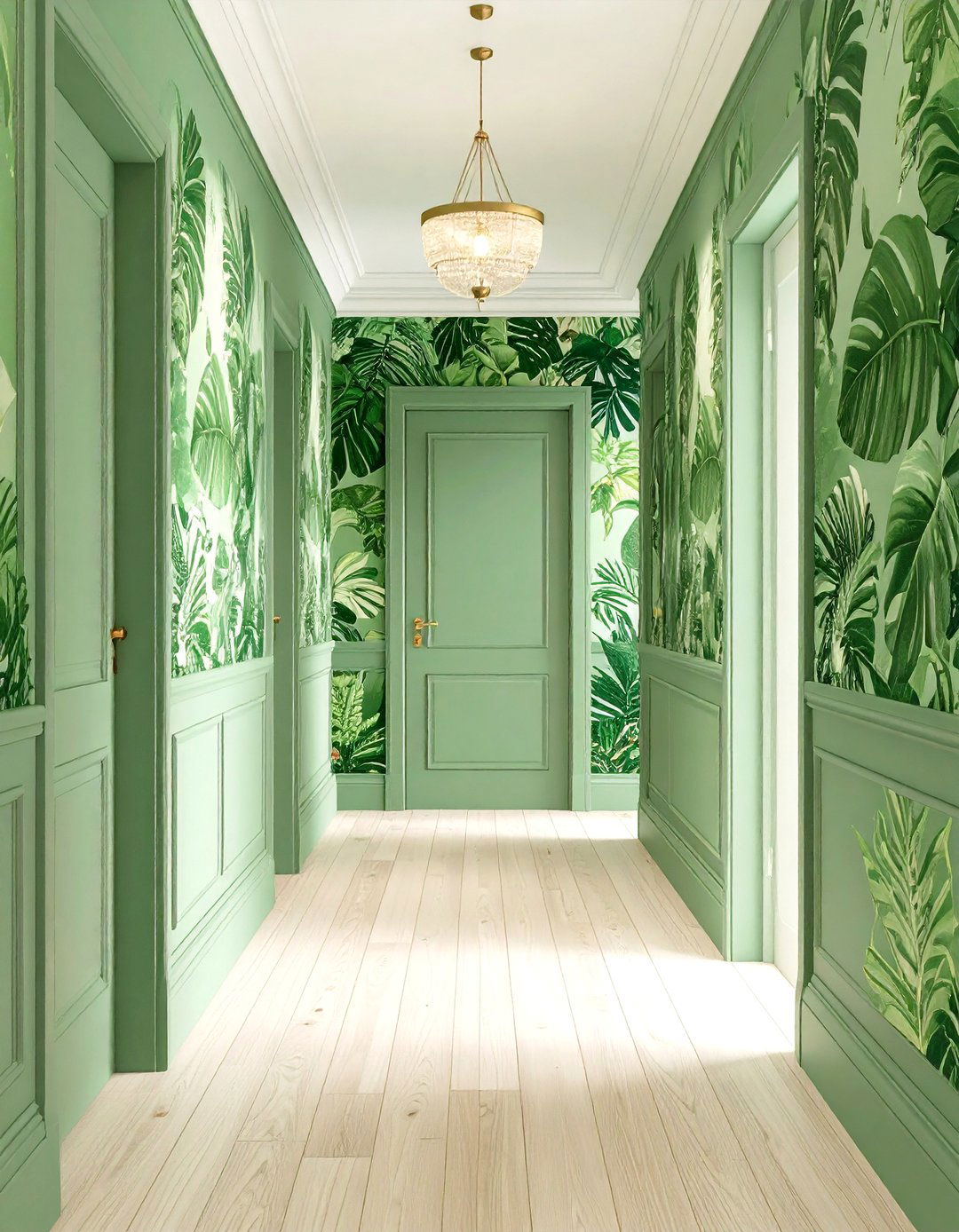
For renters or pattern lovers, a botanical wallpaper in leafy greens turns plain plaster into a forested walkway. Contemporary wallpaper collections emphasize color-drenched foliage and tropical motifs precisely because they enliven narrow transit zones with minimal effort Wallpaper Direct Rebel Walls. Pair bold paper with painted baseboards in one of the print’s quieter greens to keep costs down on custom trims. If ceilings are low, choose vertical vine patterns to visually stretch height; if length feels endless, opt for large-scale leaves to shorten perspective and add cozy intimacy.
6. Biophilic Green Hallway with Living Plants
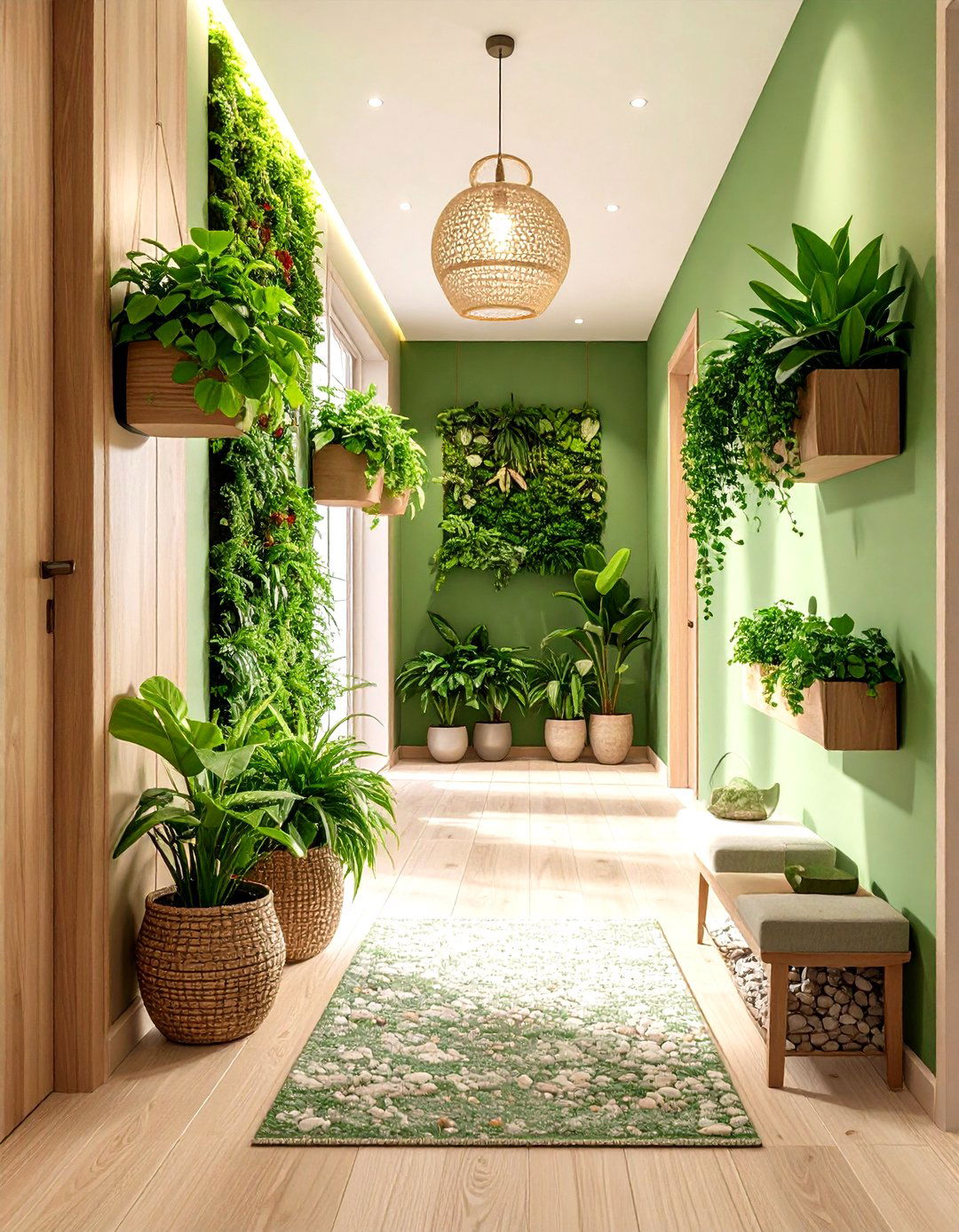
Bringing genuine greenery into a green hallway multiplies the restorative effect—biophilic design research links living plants and natural colors to improved mood and cognitive performance House Beautiful. Mount a slim, irrigated moss panel or stagger wall-hung planters filled with peperomia along the longest wall, letting foliage cast organic shadows that soften straight architectural lines. An inexpensive grow-light strip hidden behind a molding keeps plants thriving even in windowless corridors, while a pebble-filled boot tray at the threshold reinforces the outdoor-indoors dialogue.
7. Light Sage Green Hallway for Visual Width

As experts in paint reflectivity explain, pale greens with a light-reflective value (LRV) above 60 physically bounce more lumens, making tight hallways appear broader and brighter Sherwin-Williams. Brush walls, ceiling, and even interior doors in the same airy hue for an unbroken surface that tricks the eye into reading “bigger space.” A narrow mirror tiled from baseboard to chair-rail further amplifies depth, while minimalist track lighting prevents ceiling clutter. Finish with translucent seagrass runners that echo the paint without darkening the floor plane.
8. Olive Green Hallway Bench with Hidden Storage
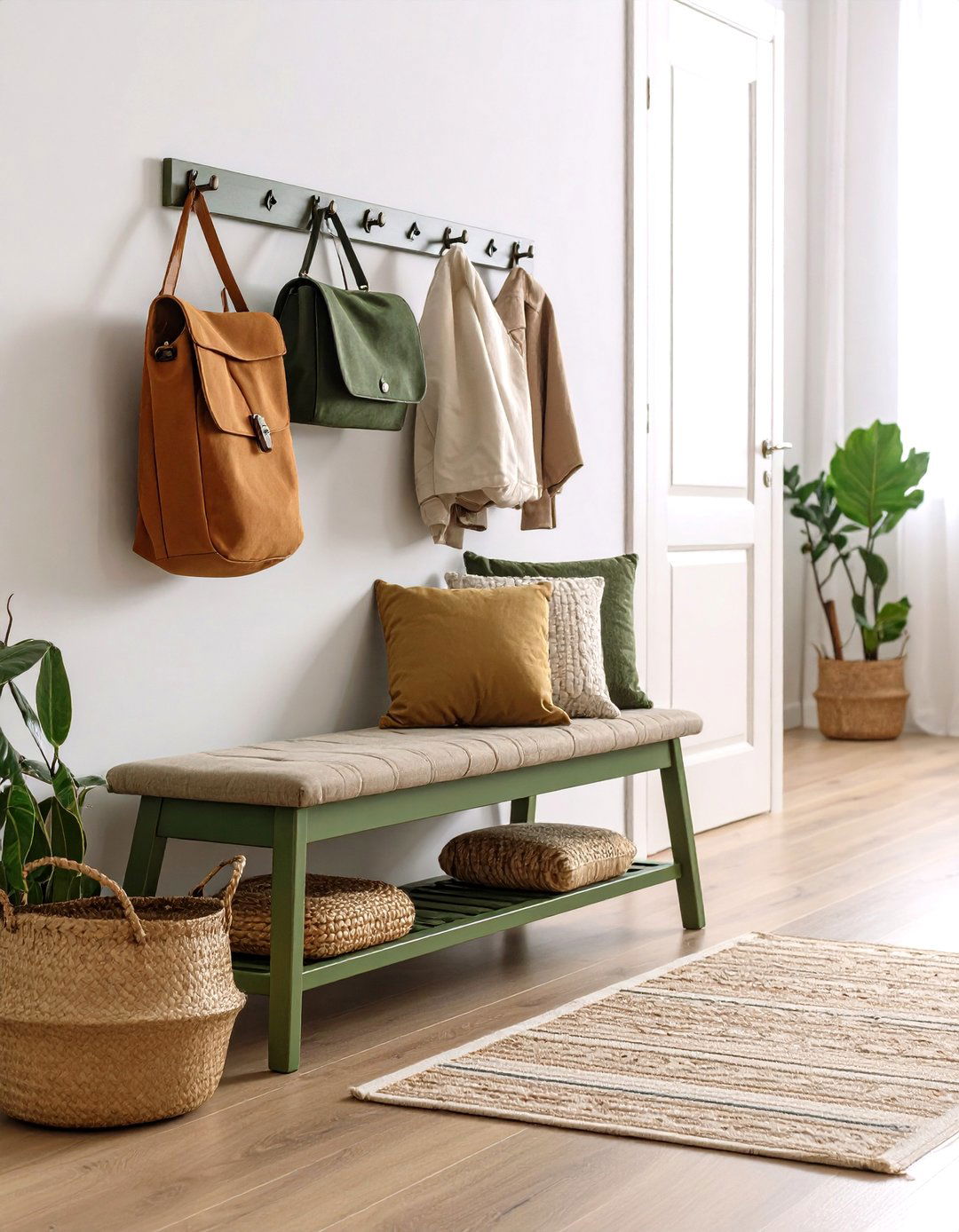
What better place to stash shoes than beneath a custom olive green hallway bench? Visual inspiration shows this earthy shade grounding lighter walls while hiding fingerprints on frequently touched surfaces Pinterest. Hinge-top seating keeps clutter out of sight, and adding a matching peg rail above forms an organized drop zone. Slip a few textured cushions in beige or rust on top for contrast, and suddenly functionality meets farmhouse charm without sacrificing a cohesive palette.
9. Monochrome Green Hallway Gallery Wall
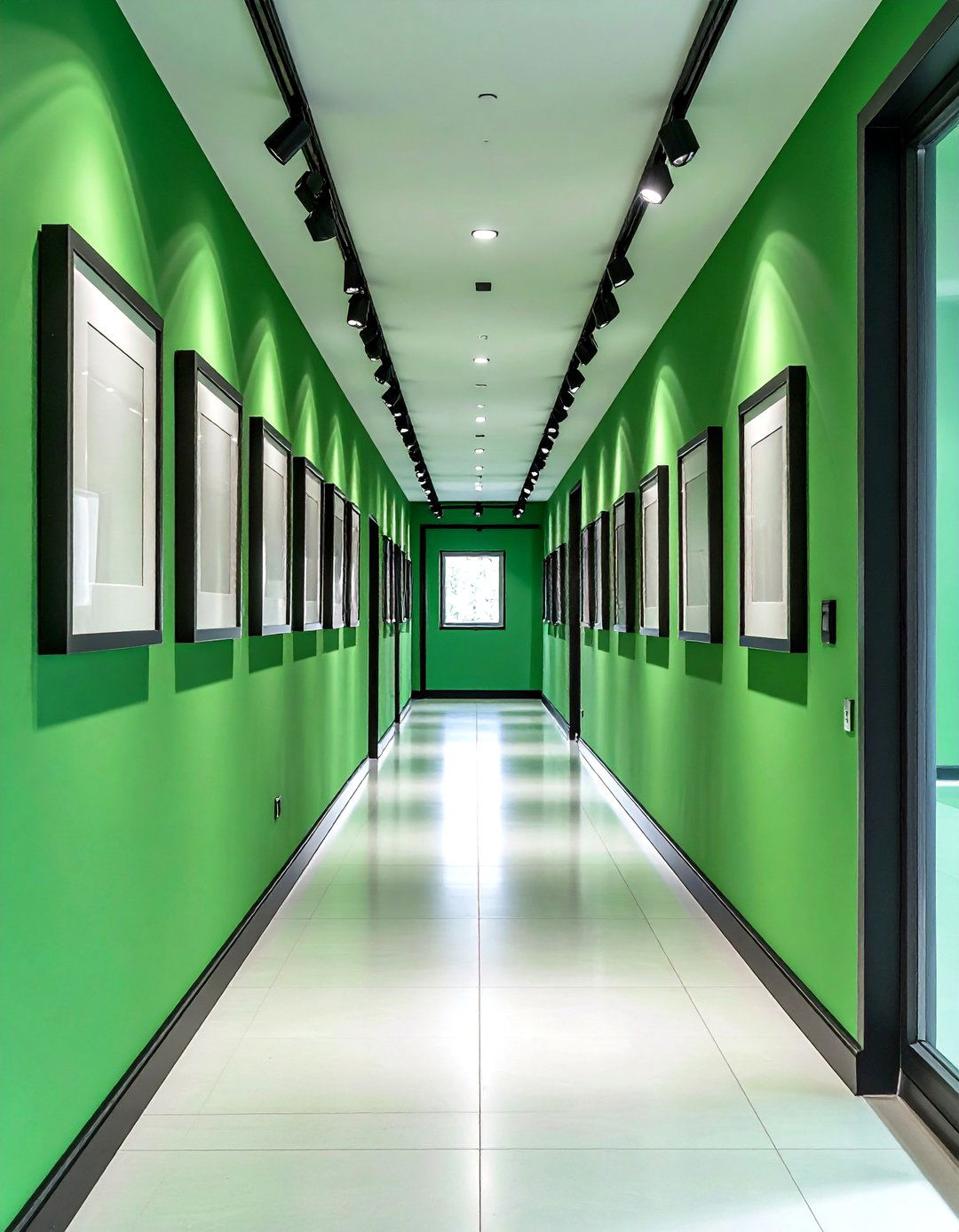
A monochrome green hallway painted floor to ceiling—including picture rails—creates the perfect backdrop for a tightly curated gallery. Design images reveal that color-drenching frames and background together lets artwork pop without busy contrast Pinterest The Spruce. Choose slim black metal frames for contemporary cohesion, then vary artwork sizes to generate movement along the corridor. A track of adjustable spotlights ensures each piece glows, turning transitory space into a mini-exhibition.
10. Patterned Green Hallway Stair Runner
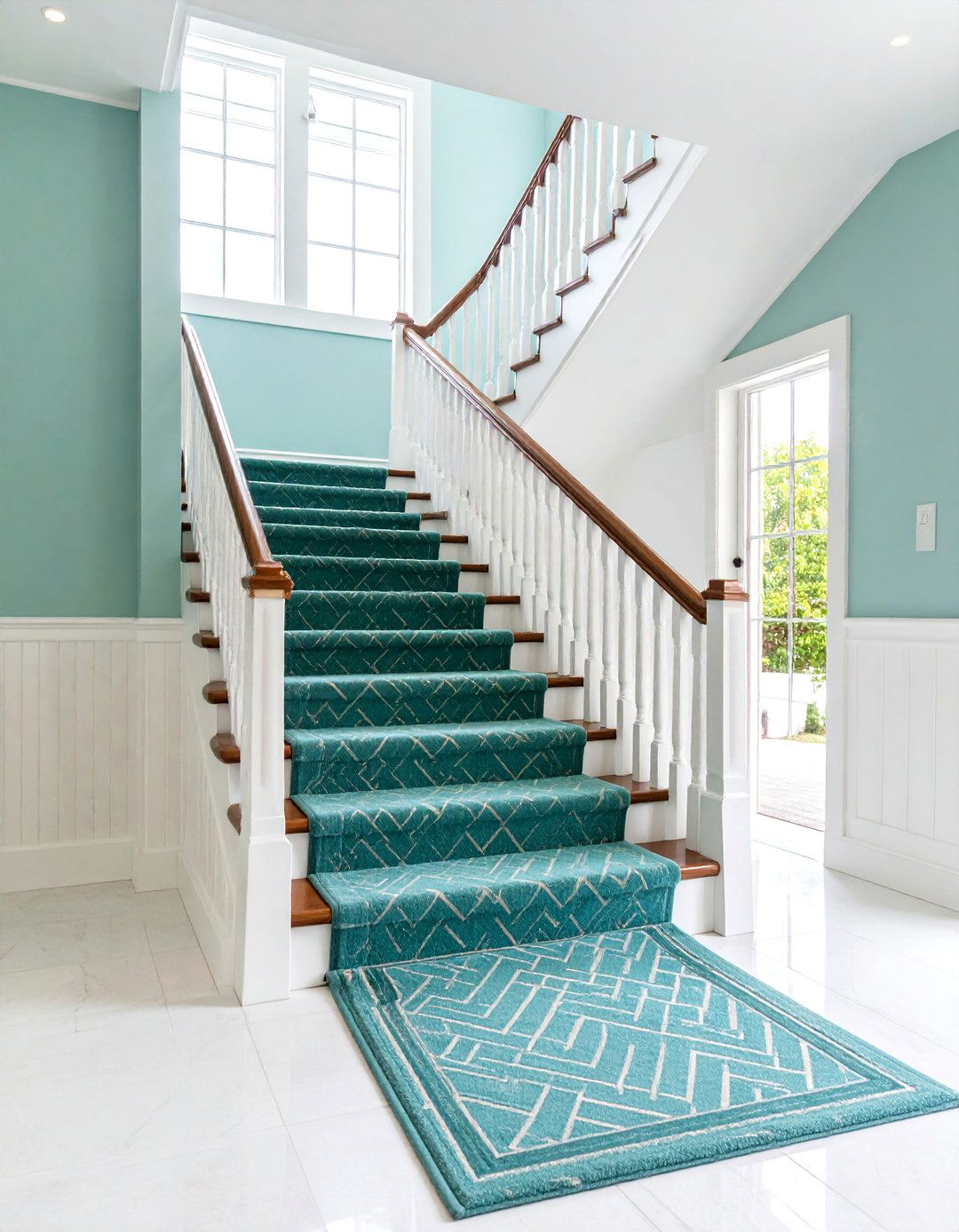
Take, for instance, a staircase wrapped in an emerald-and-cream herringbone runner: it softens footfall, adds grip, and injects instant personality. Recent runner trends champion bold patterns and color for hallways because they double as durable artwork underfoot Livingetc. Washable synthetics or indoor-outdoor fibres make upkeep simple, and a coordinating slim runner at the landing keeps the narrative flowing. If the hallway walls are painted, pull a secondary stripe from the runner into the paint choice for seamless integration.
11. Landscape-Mural Green Hallway Escape
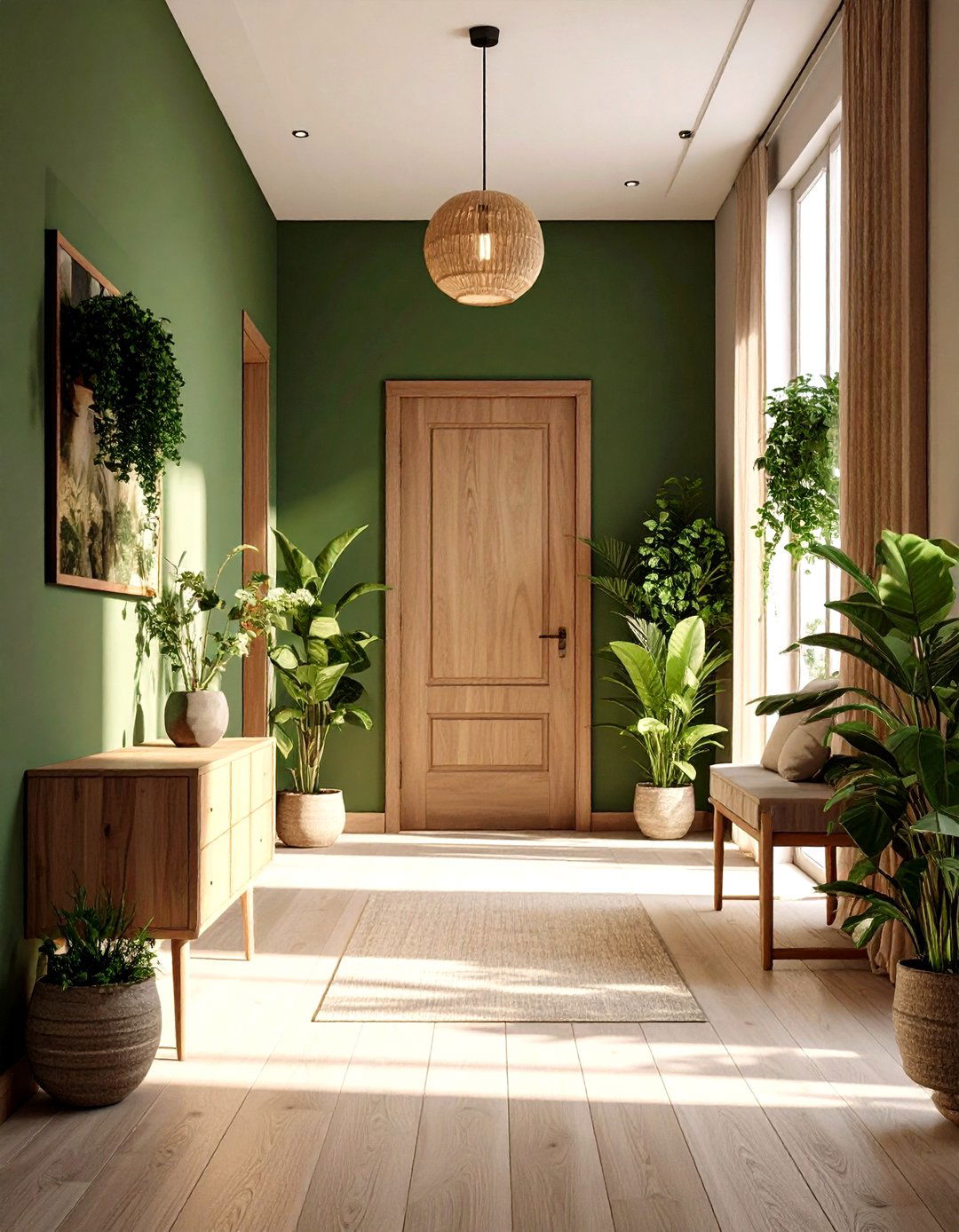
Surprisingly, a panoramic mural in misty olive, moss, and sage can make a green hallway feel endless, like stepping into distant hills. Peel-and-stick landscape murals are now cut to custom lengths, letting even rental corridors enjoy immersive art without permanent glue belarteSTUDIO. Frame the scene with ultra-slim battens painted to match the darkest mural tone; the subtle border elevates the installation to gallery status while protecting edges from wear.
12. Vintage Rug-Layered Green Hallway
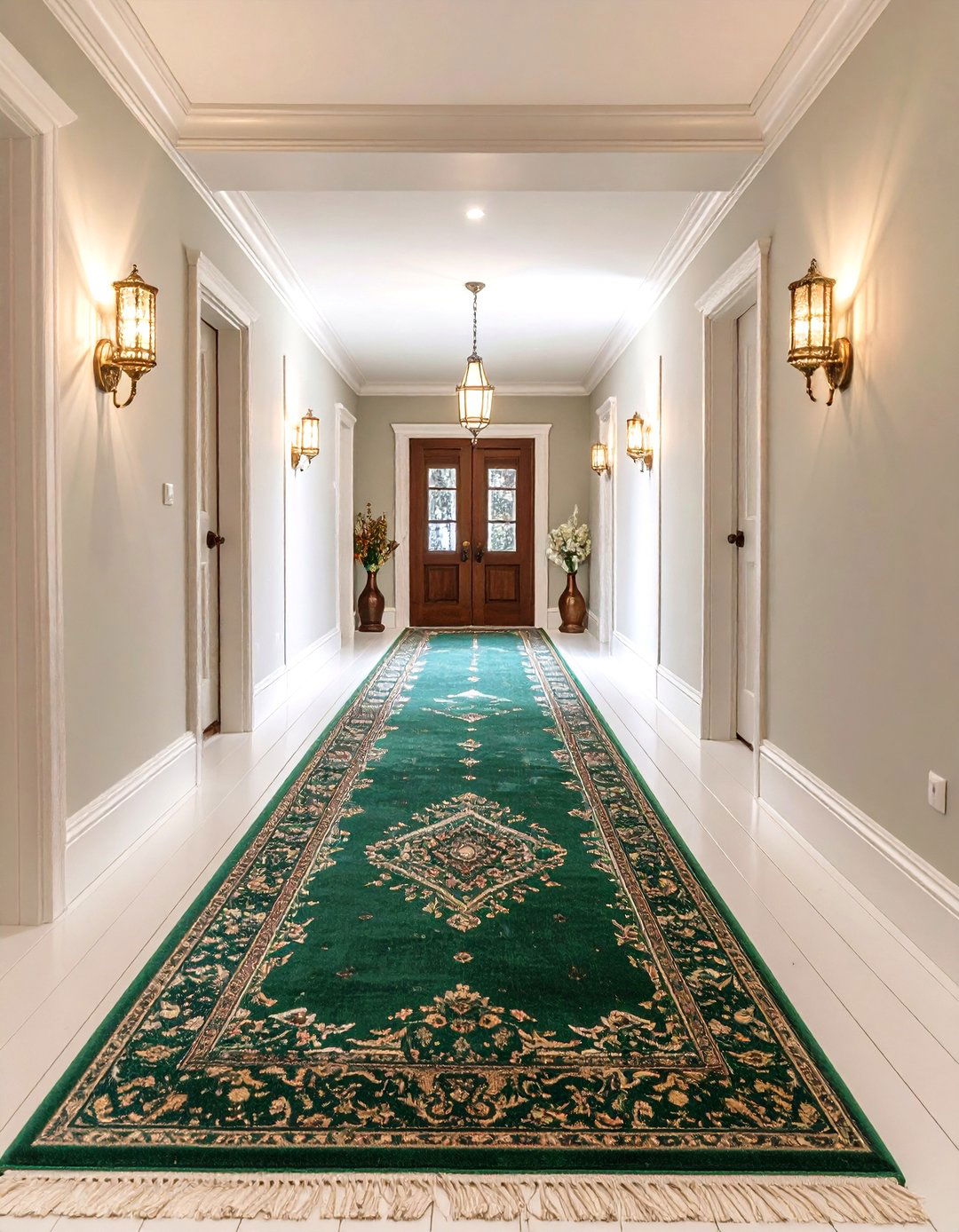
Layering a time-worn runner over simple floorboards lets the hallway’s green walls echo in threadbare emerald or sage motifs. Vintage-look runners remain popular because their patterned fading disguises future spills and brings instant character Rugs Direct. Roll a non-slip pad underneath, then flank the rug with slim lantern-style sconces so its mellow palette glows after dusk. This trick is especially impactful in rentals where flooring can’t be replaced but style is still essential.
13. Ceiling-Drenched Green Hallway
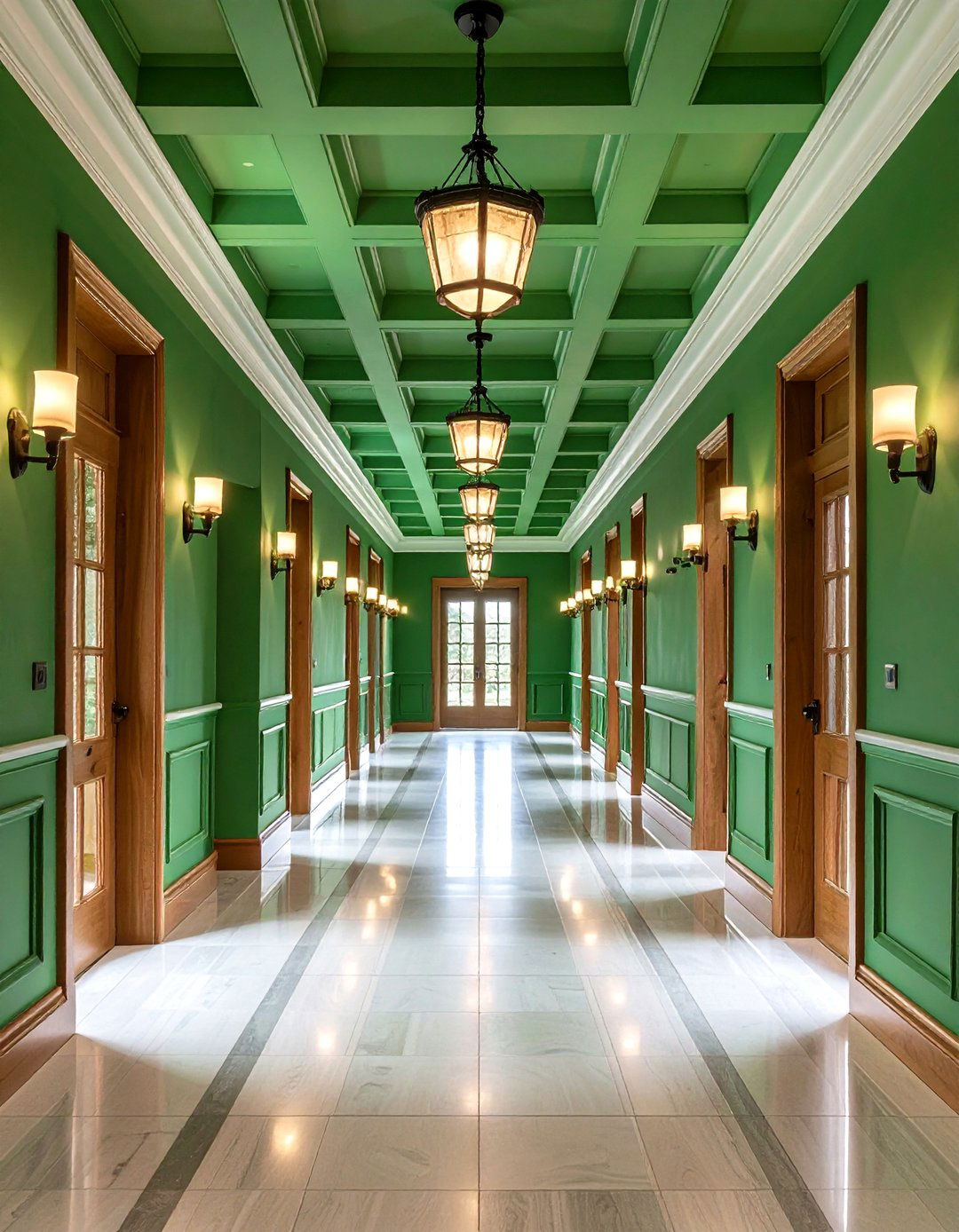
Looking upward, painting the ceiling—often dubbed the “fifth wall”—the same rich green as the walls produces a cocooning, contemporary effect known as color drenching. Consumers and decorators alike increasingly favor this monochromatic approach for its ability to blur hard edges and elevate modest spaces into boutique-hotel territory Reddit. Introduce warm oak thresholds to break expanses subtly, and choose matte paint to minimize glare on the overhead plane.
14. Limewash Green Hallway Texture
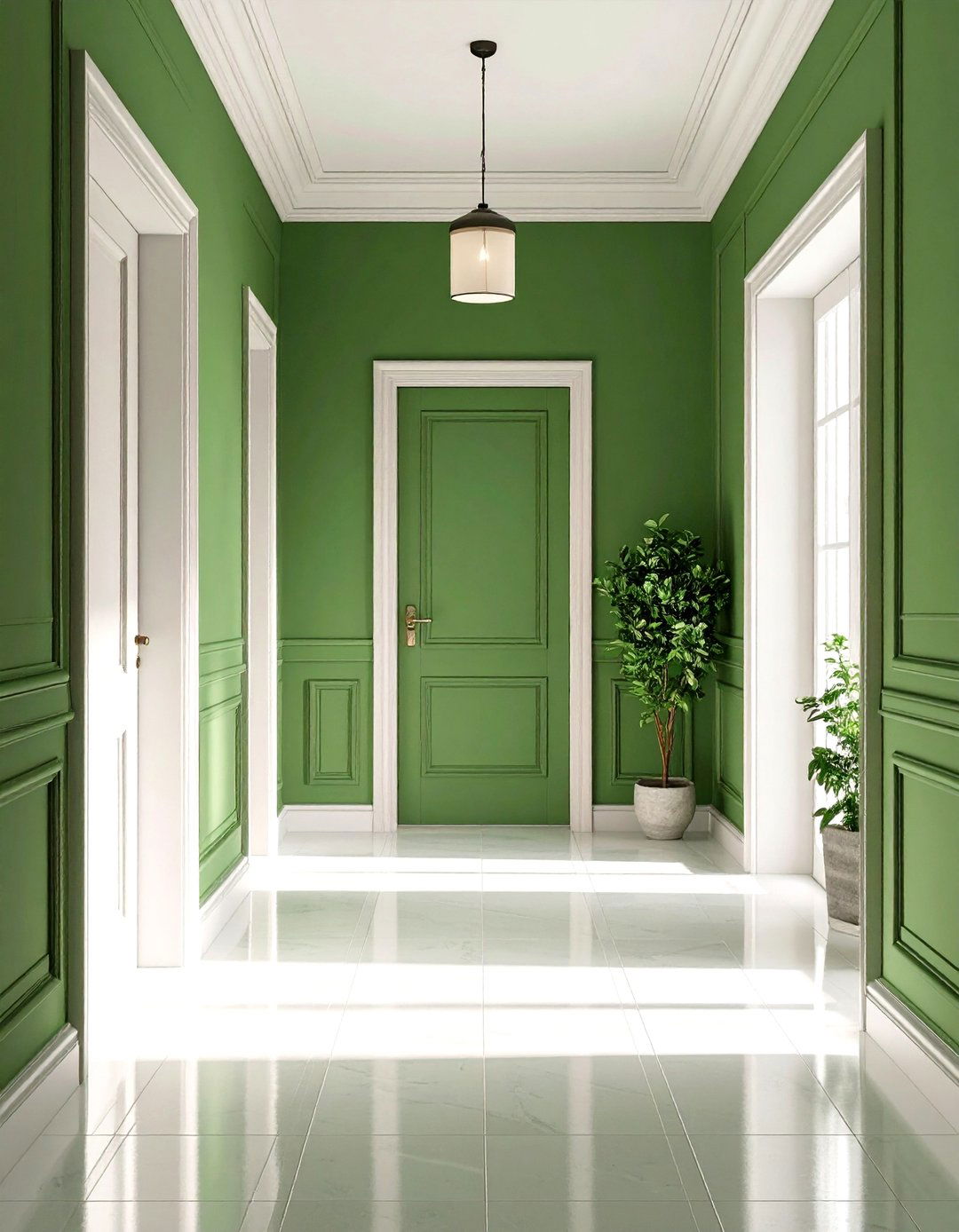
Certainly, texture can carry as much weight as hue. Limewash paint delivers variegated depth thanks to its mineral-rich formula, leaving subtle brush movement and a velvety matte finish that breathes with masonry Livingetc. Opt for a soft moss tone to underscore the artisanal feel, and seal high-touch areas with compatible clear wax. Keep trim detail minimal so the irregular tonal play remains the main attraction, echoing the patina of time-worn plaster.
15. Color-Drenched Green Hallway Trim

By ditching white trims and painting skirting, architraves, and doors in the same green hue, you minimize visual stop-points and elongate walls, a technique designers applaud for its contemporary edge Homes & Gardens. Select a slightly higher sheen for the woodwork so subtle light bounce differentiates surfaces. Layer a lighter runner or artwork to ensure depth without reverting to stark contrast, proving that a single color can still provide dynamic nuance.
16. Brass-and-Green Hallway Lighting
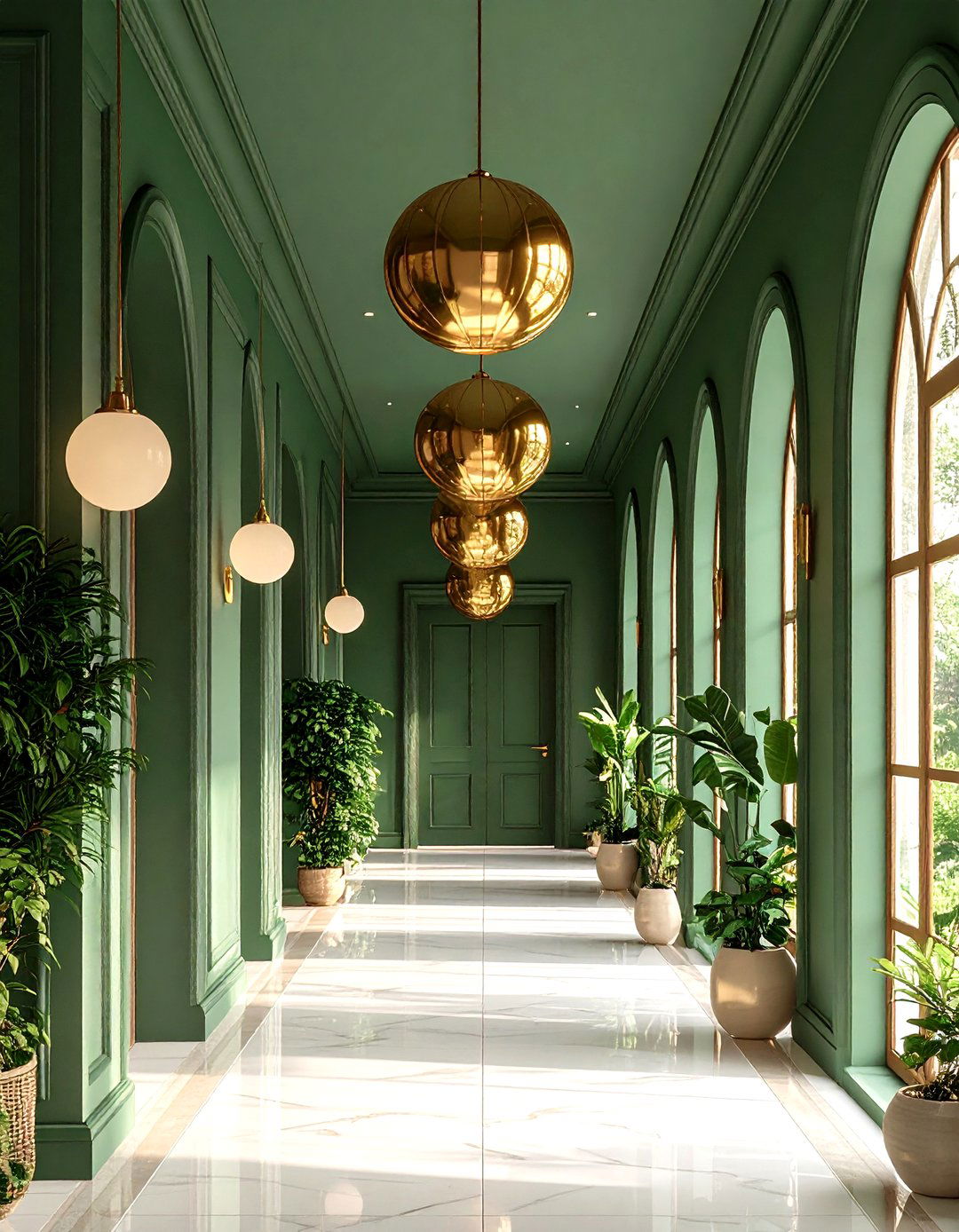
As pendant-light roundups show, warm metallics like brass or antique gold glow gently against green backdrops, adding a luxe note without overwhelming scale Better Homes & Gardens. Choose a semi-flush globe in opal glass to maximize headroom while casting even light. Position fixtures in a rhythmic line if the corridor is long, or center one over a statement console to anchor the arrangement. The metallic warmth balances green’s coolness, preventing the scheme from feeling too vegetal.
17. Green Hallway with Pink Accents

Surprisingly, blush and sage are complementary on the color wheel, creating balanced energy that feels fresh yet classic. Case studies of pink-and-green corridors demonstrate that pastel pink runners, lampshades, or art pops enliven cooler walls without the jarring contrast of primary reds Houzz. Keep pink elements matte and muted to avoid a childlike palette; dusty rose or muted coral pairs best with olive or sage. Finish with a neutral jute doormat to ground the playful scheme.
18. Reclaimed-Wood Console in Green Hallway
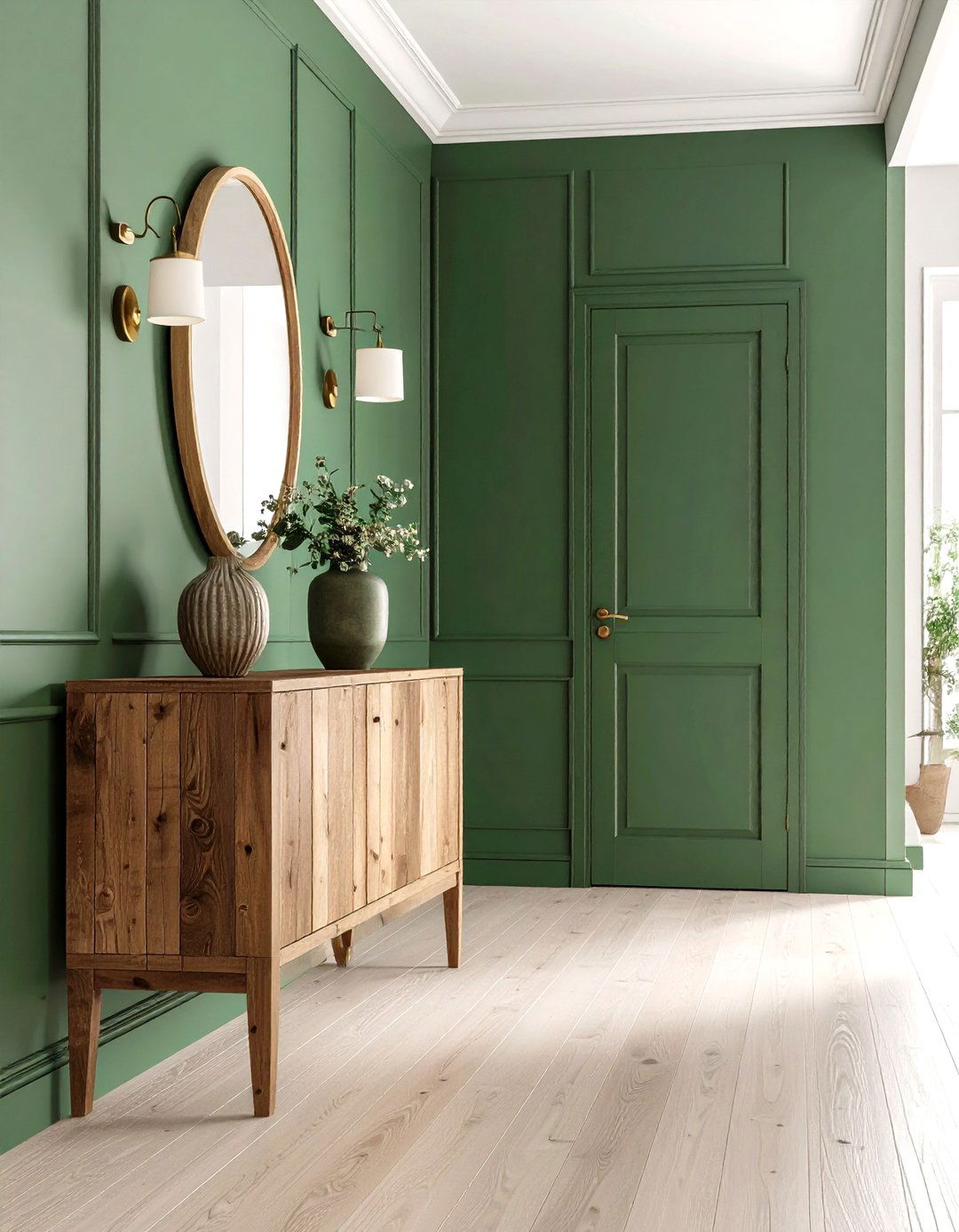
Sustainability meets style when a narrow console fashioned from reclaimed timber rests against deep green hallway walls. Design articles highlight wood’s ability to warm saturated colors and add tactile richness without cluttering slim spaces The Times. To refine the look, choose a console with integrated drawers and slim tapered legs so floor area remains visible. Dress the tabletop with a single sculptural vase—terracotta or matte ceramic works best—allowing grain patterns and green walls to share center stage.
19. Terrazzo-Tiled Green Hallway Floor

Terrazzo’s multicolored chips echo green walls while its hard-wearing surface stands up to high foot traffic—no wonder flooring trend reports spotlight green terrazzo for entryways Livingetc The Spruce. Hexagonal porcelain versions install easily and resist stains, or opt for traditional cement terrazzo for authenticity. Pick a slab containing white and charcoal flecks to broaden matching options for furniture and art, then seal thoroughly to keep the subtle sparkle intact for years.
20. Smart-Storage Niche in Deep Green Hallway
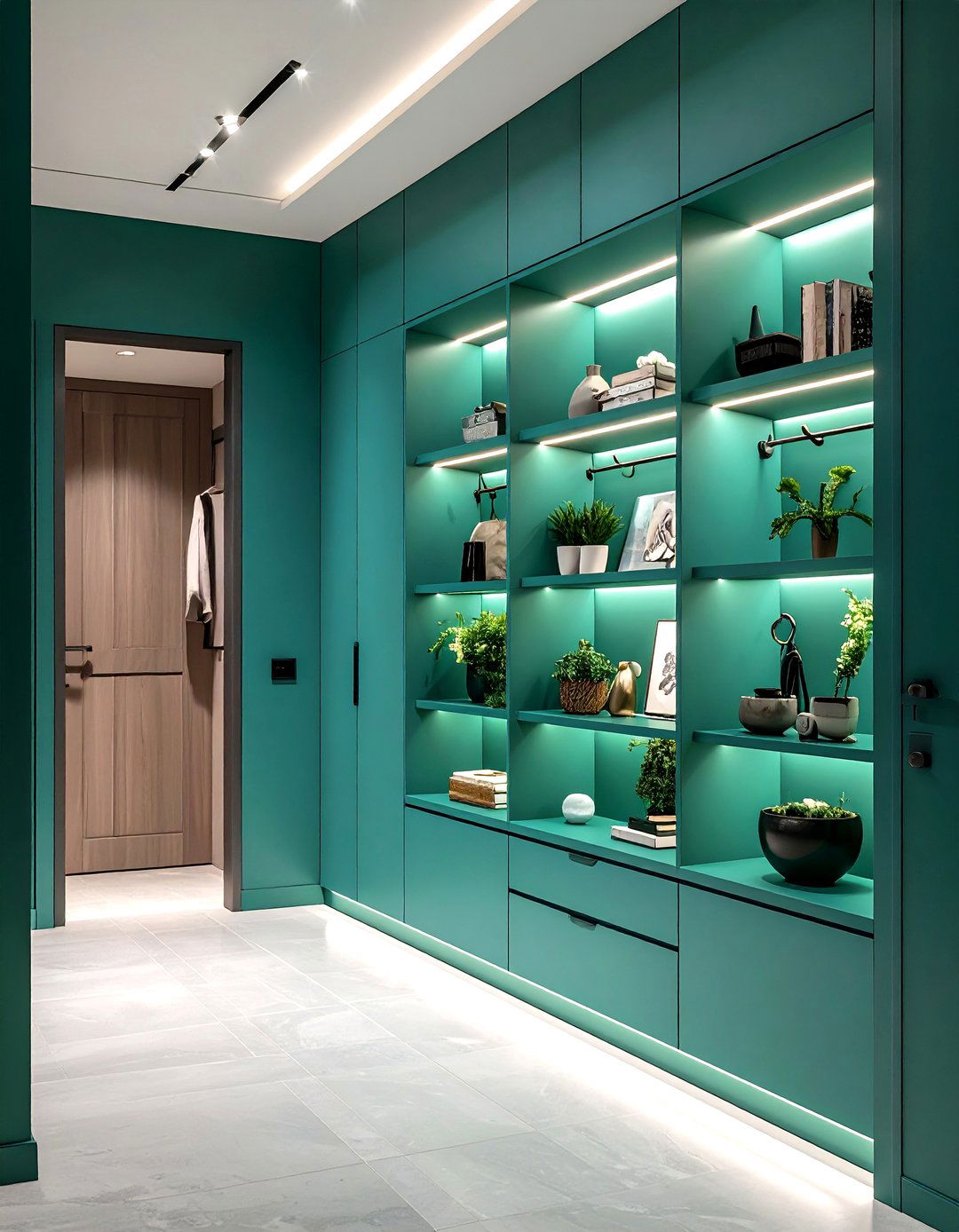
Finally, carve a shallow niche between studs, paint its interior the hallway’s dark green, and insert floating shelves for keys, mail, and small art. Storage experts recommend exploiting vertical wall planes in passageways to avoid narrowing floor space Houzz. A concealed LED strip at the top of the recess doubles as accent lighting and task illumination, while a magnetic catch keeps the flush panel door silent. The niche streamlines daily life yet reads like a sophisticated architectural detail rather than mere cabinetry.
Conclusion:
Green hallways thrive on nuance: whether you embrace airy sage for width, moody forest tones for drama, or textured limewash for patina, the palette’s innate link to nature steadies busy thresholds. Layering thoughtful finishes—glossy trim, patterned runners, living plants, or terrazzo underfoot—adds dimension without sacrificing cohesion. By marrying color psychology with practical design moves like high-LRV paints, durable surfaces, and clever storage, any corridor can graduate from forgotten conduit to restorative prelude, ensuring every arrival and departure feels grounded, intentional, and beautifully green.


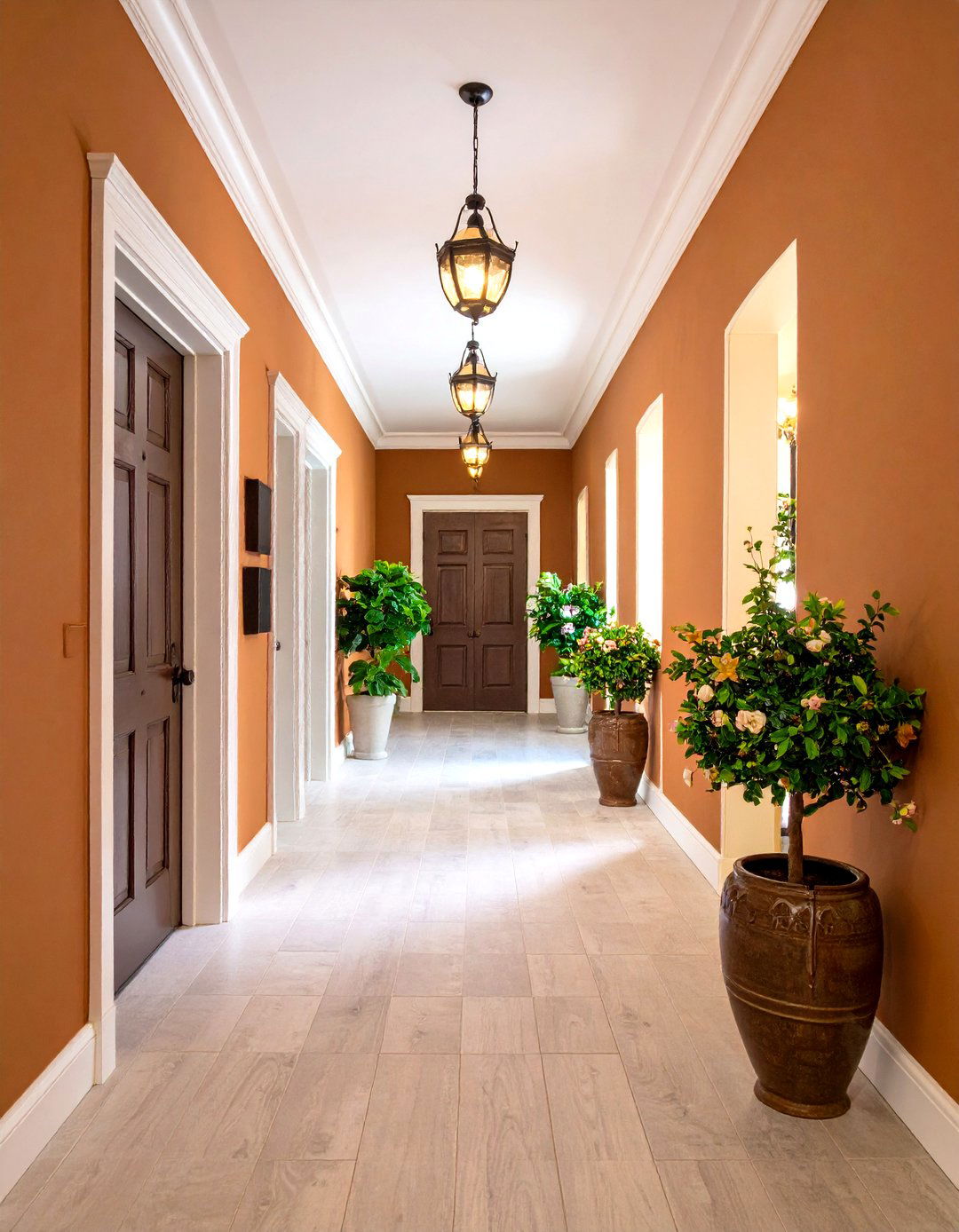
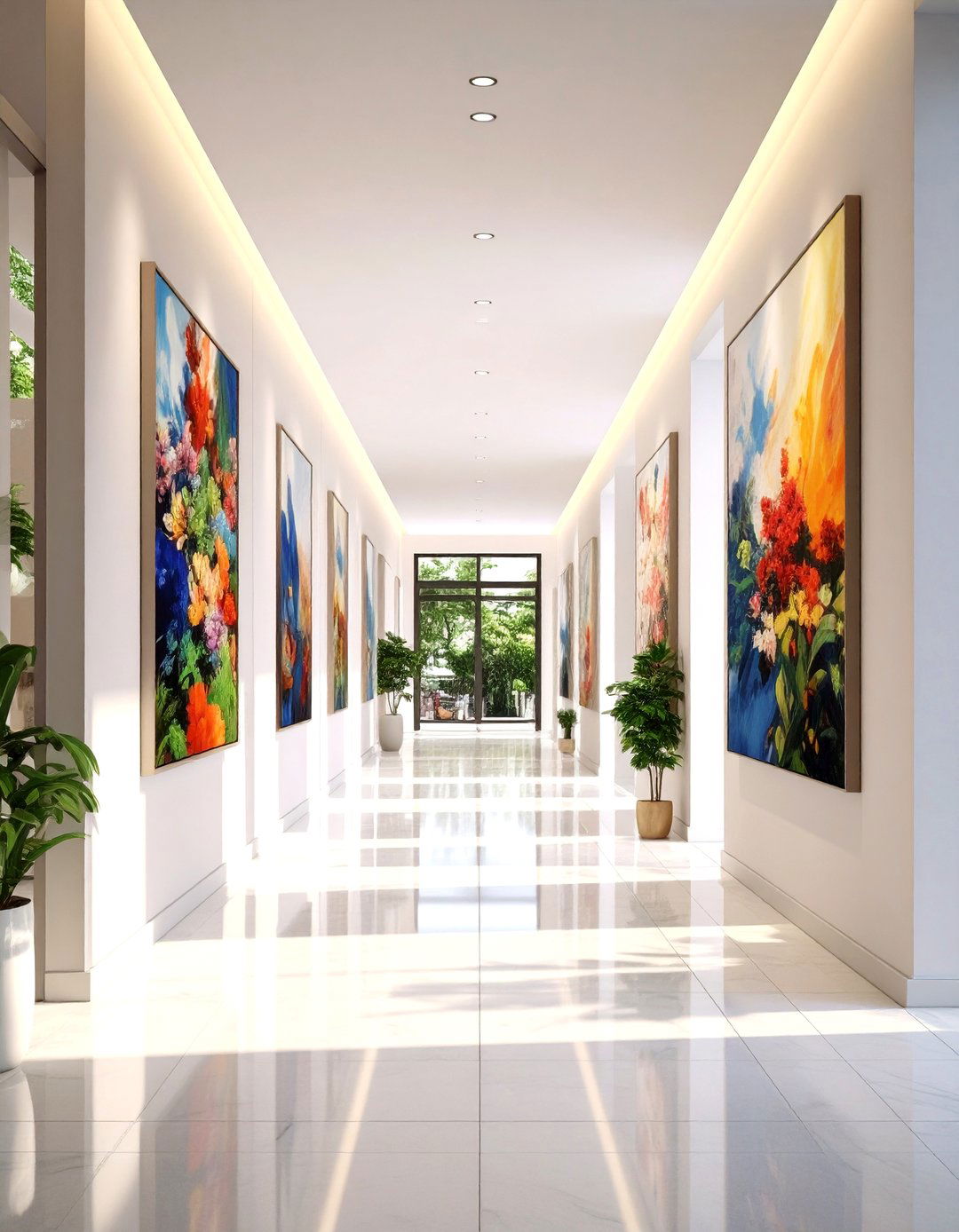
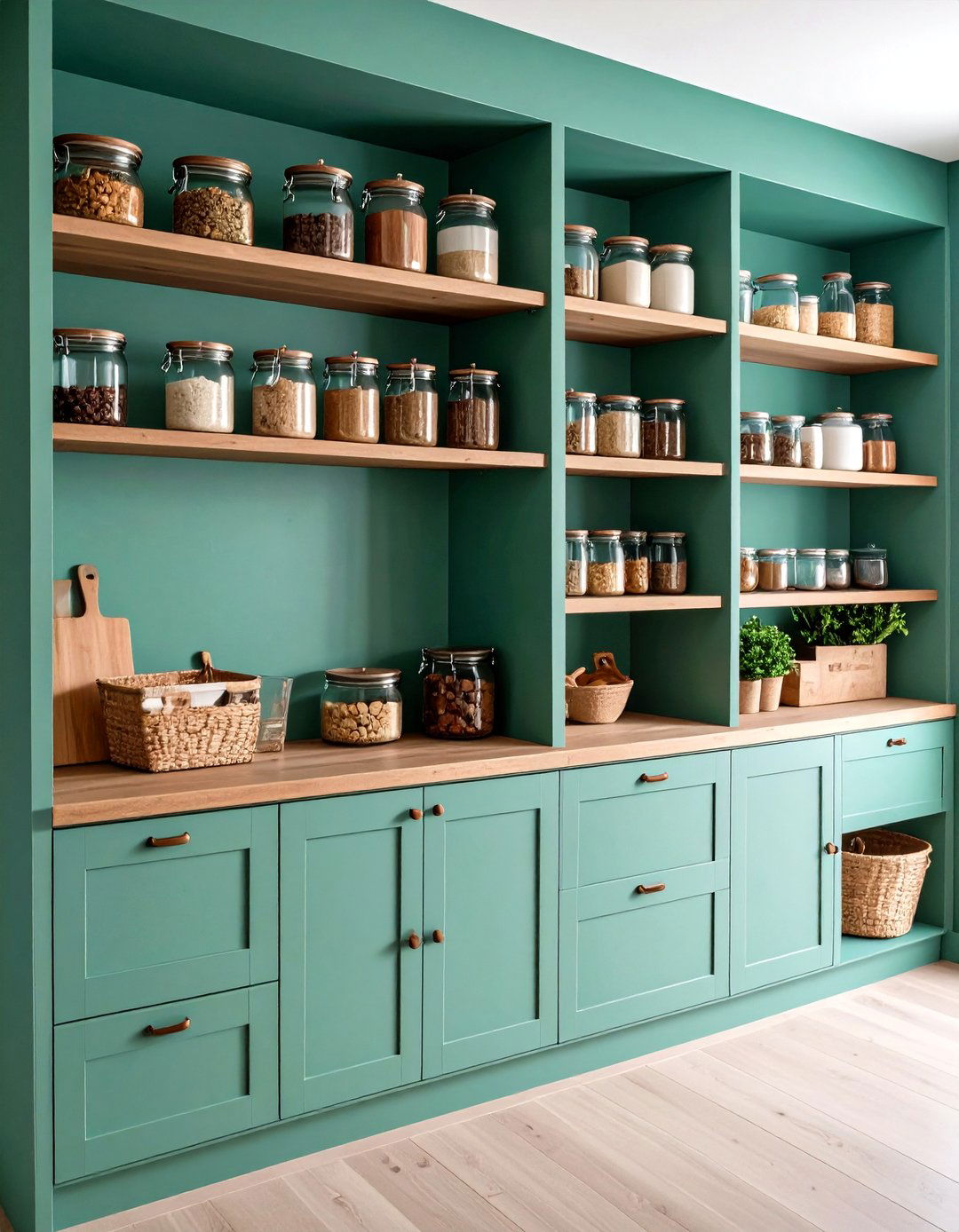
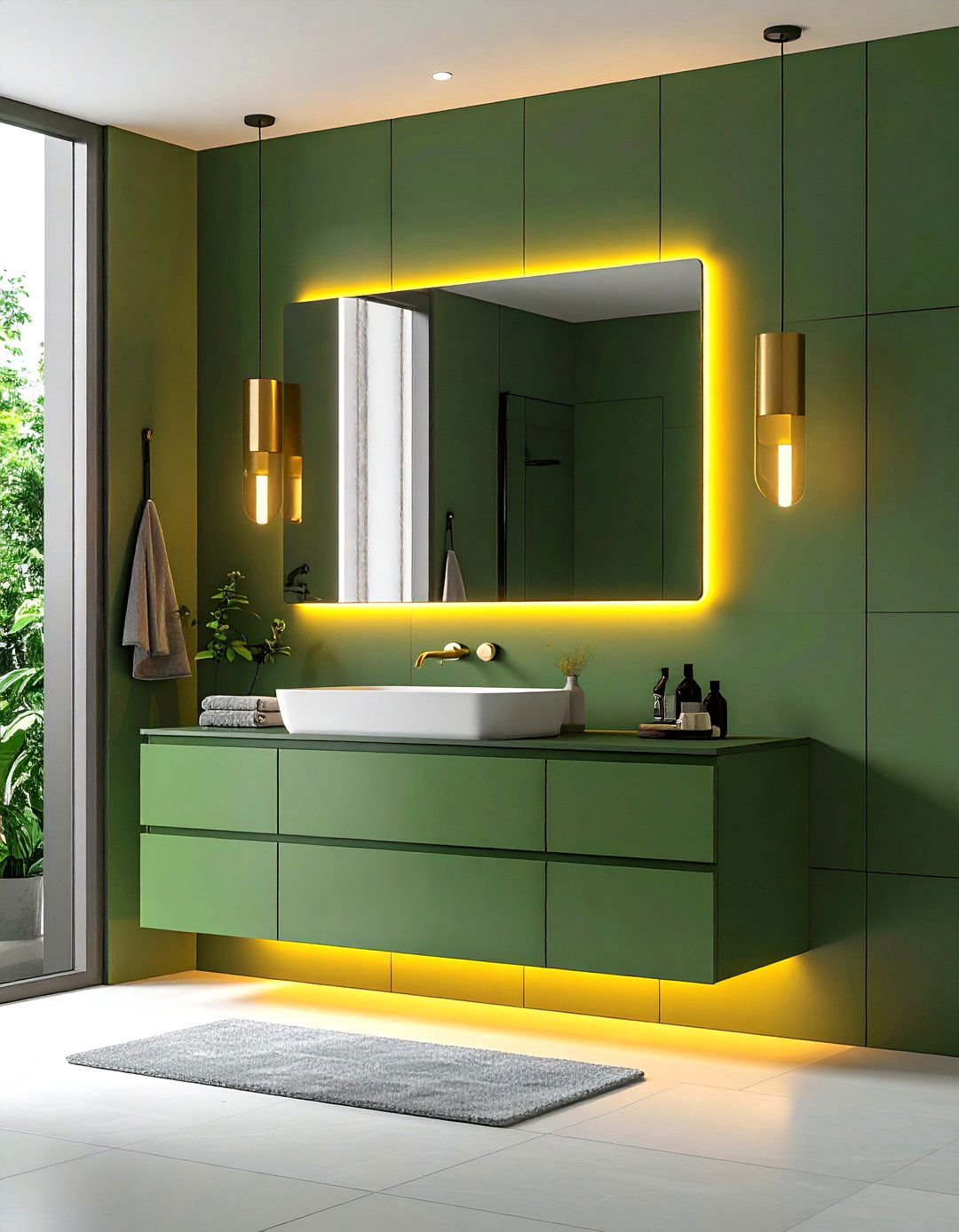
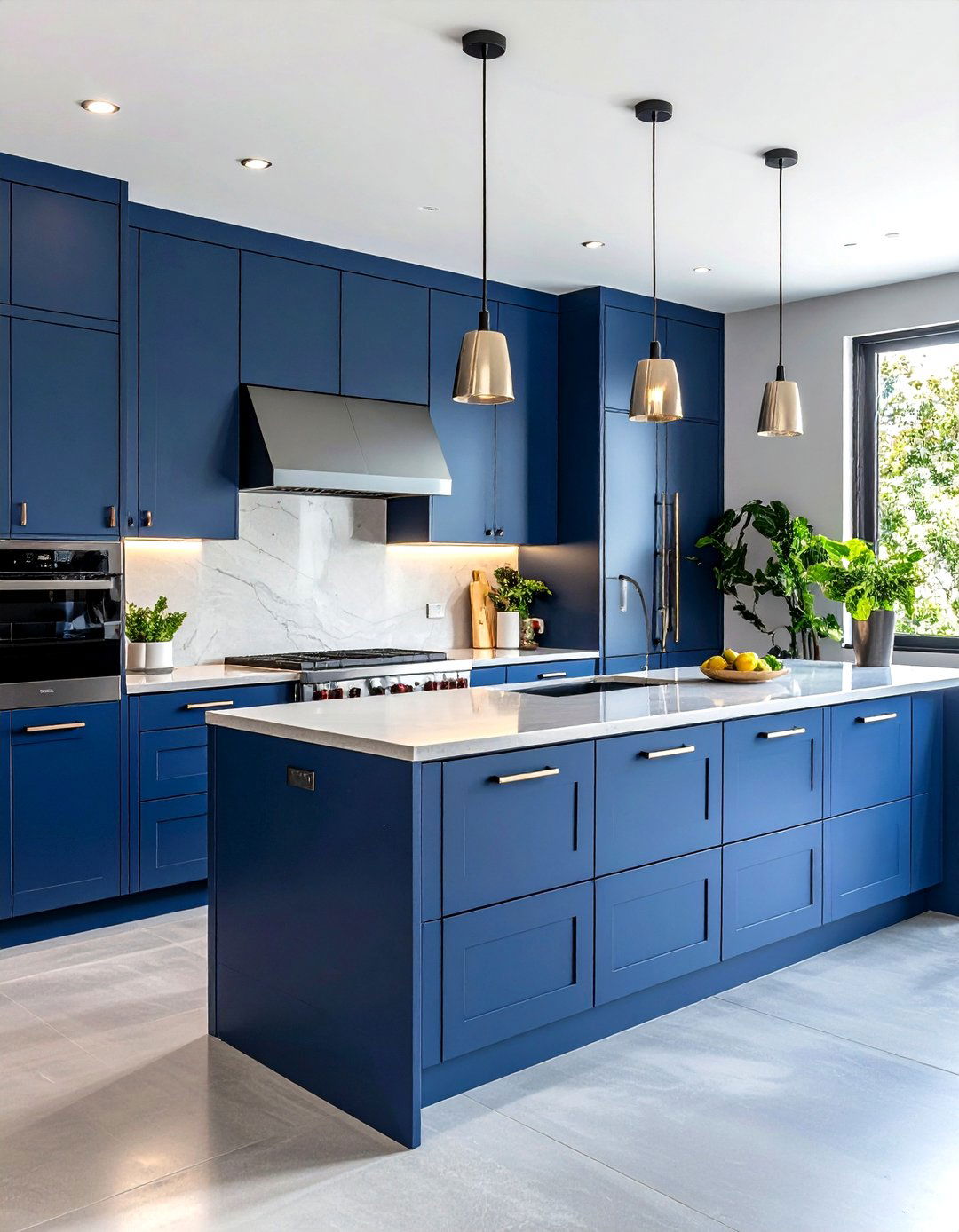

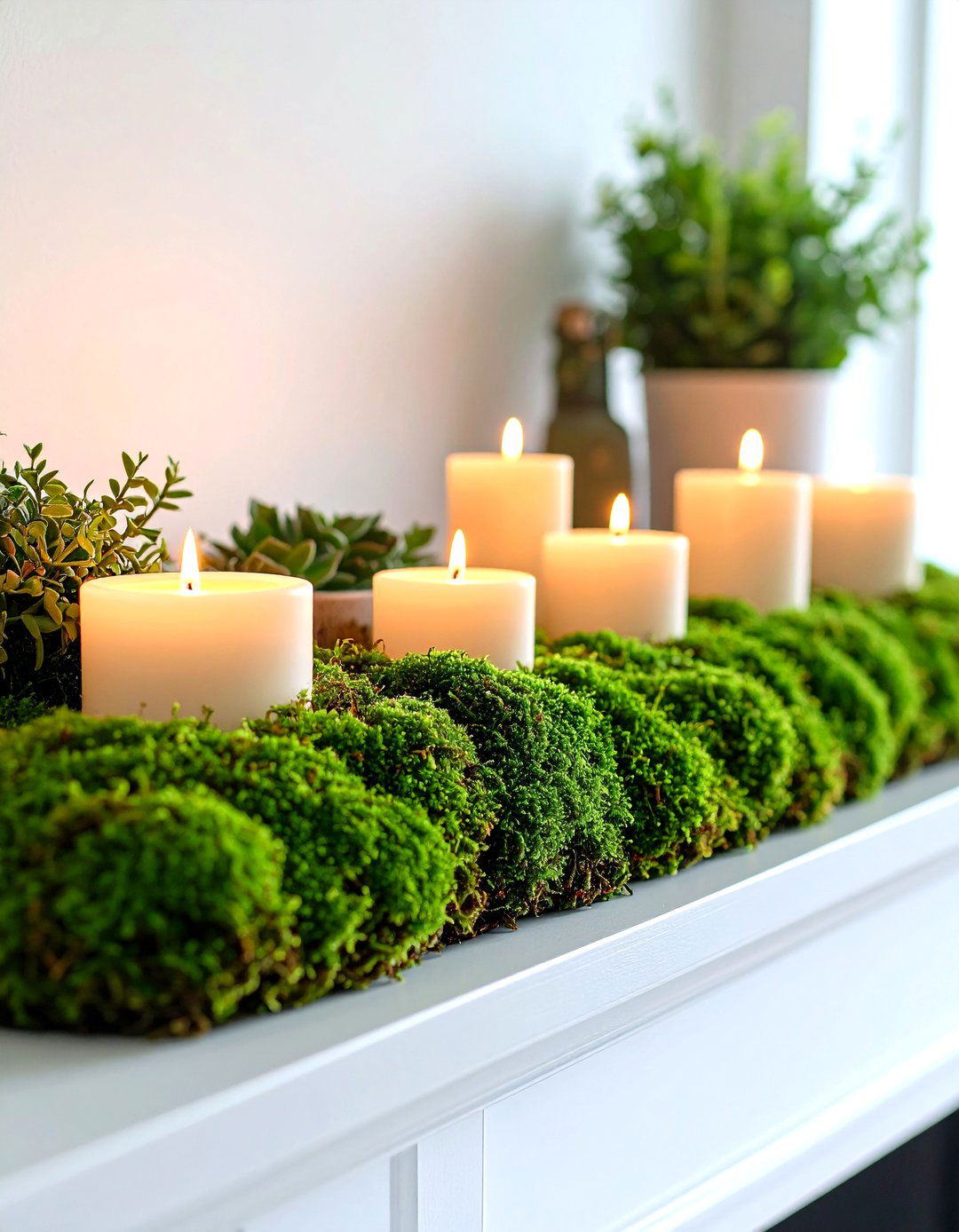
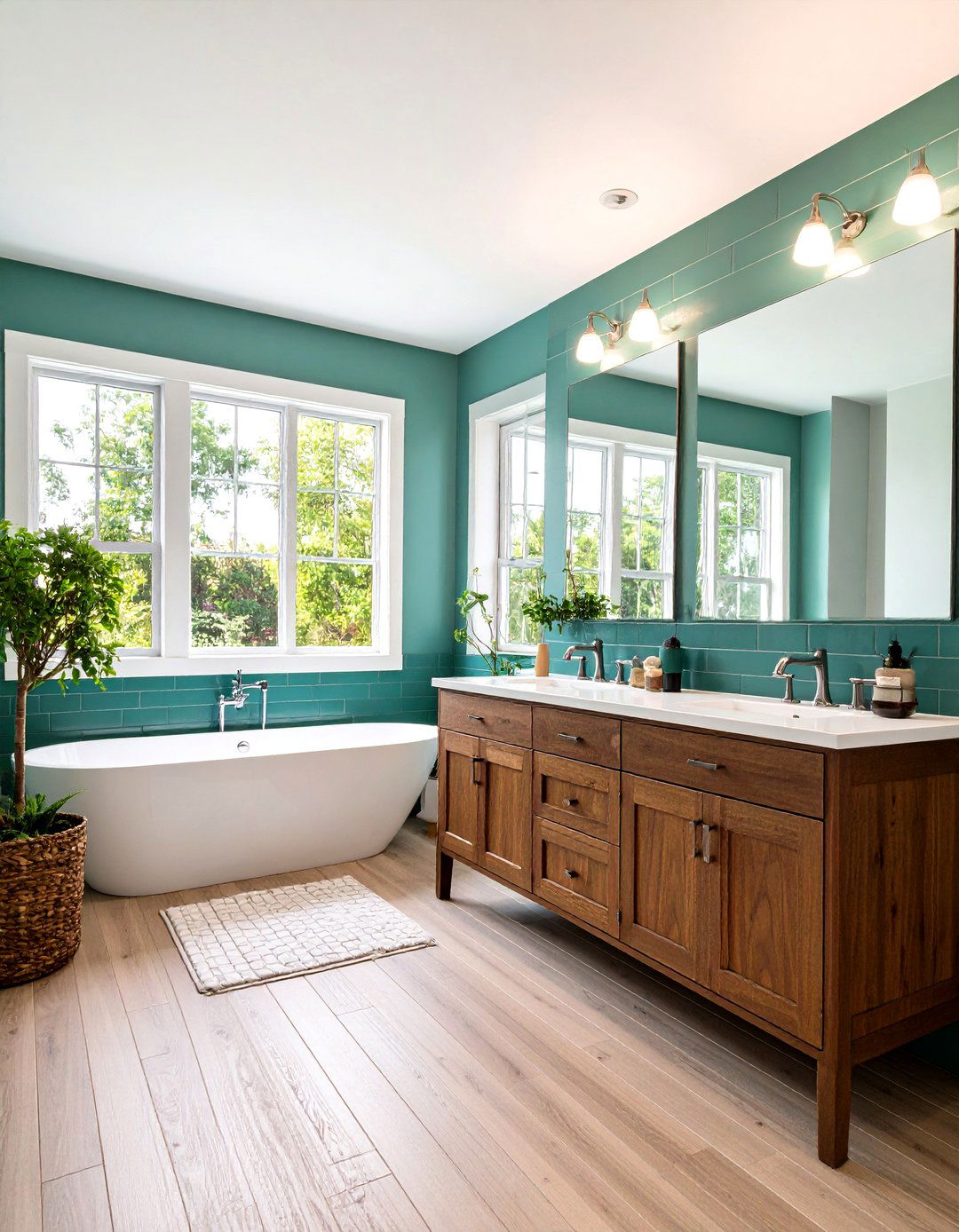
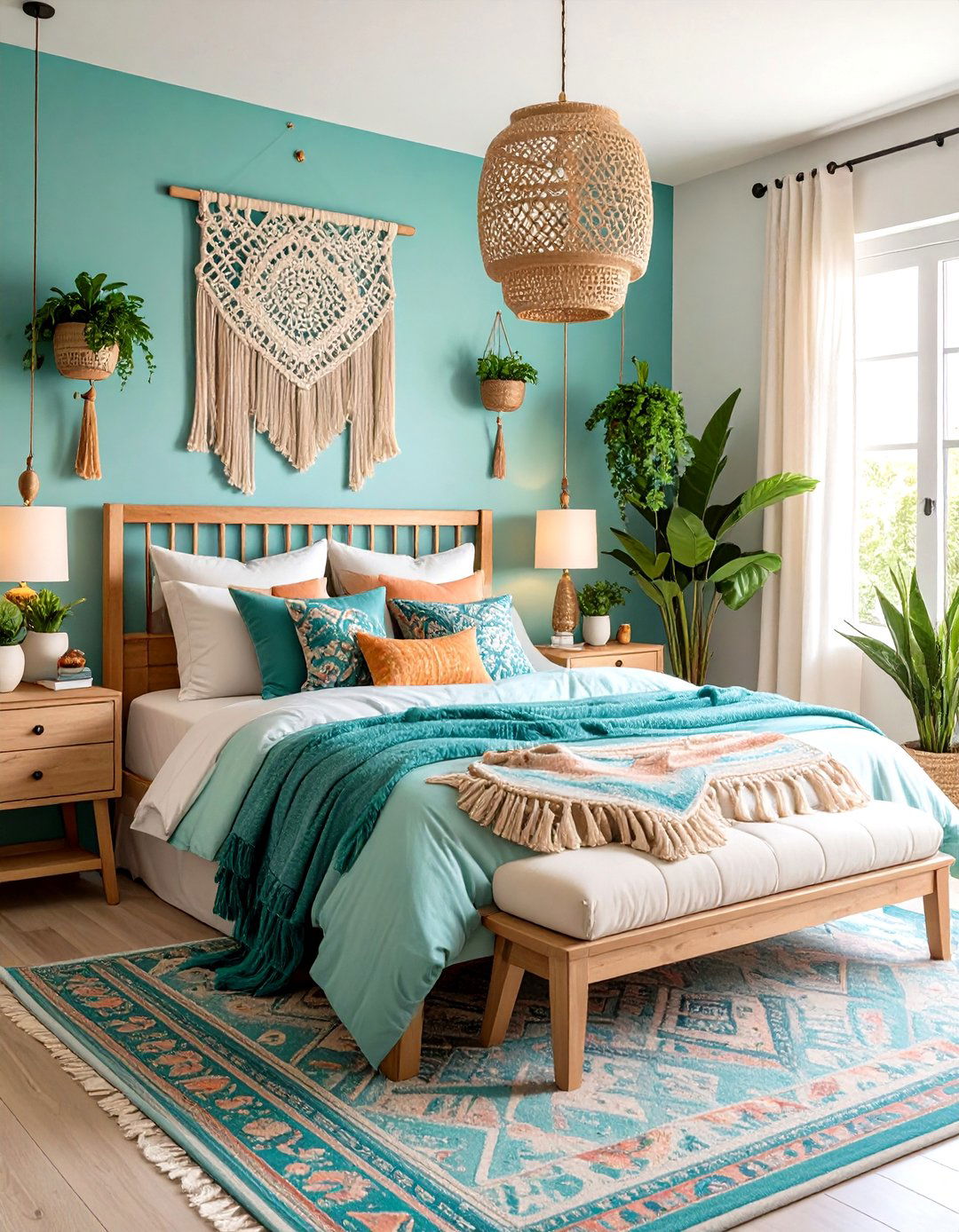
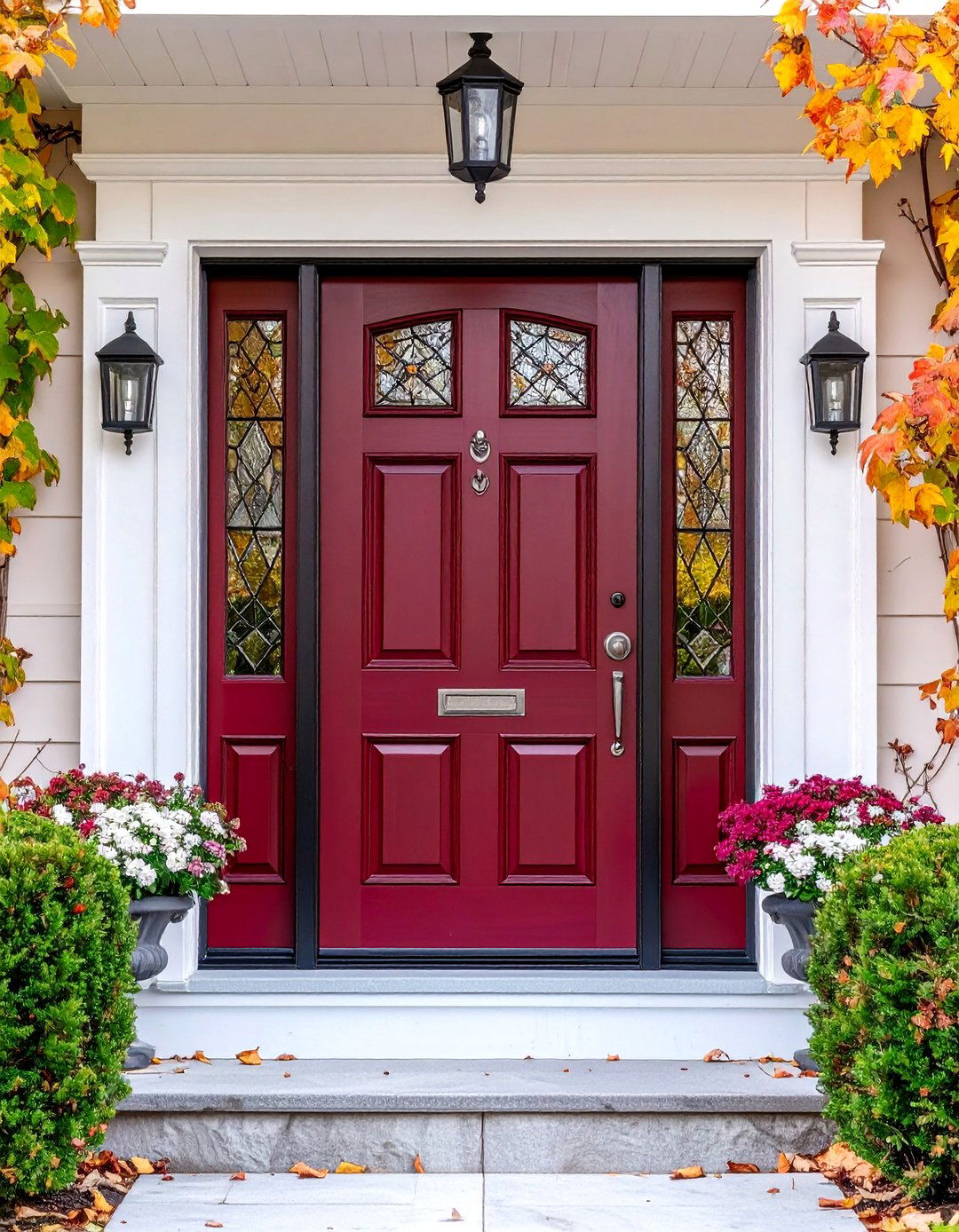

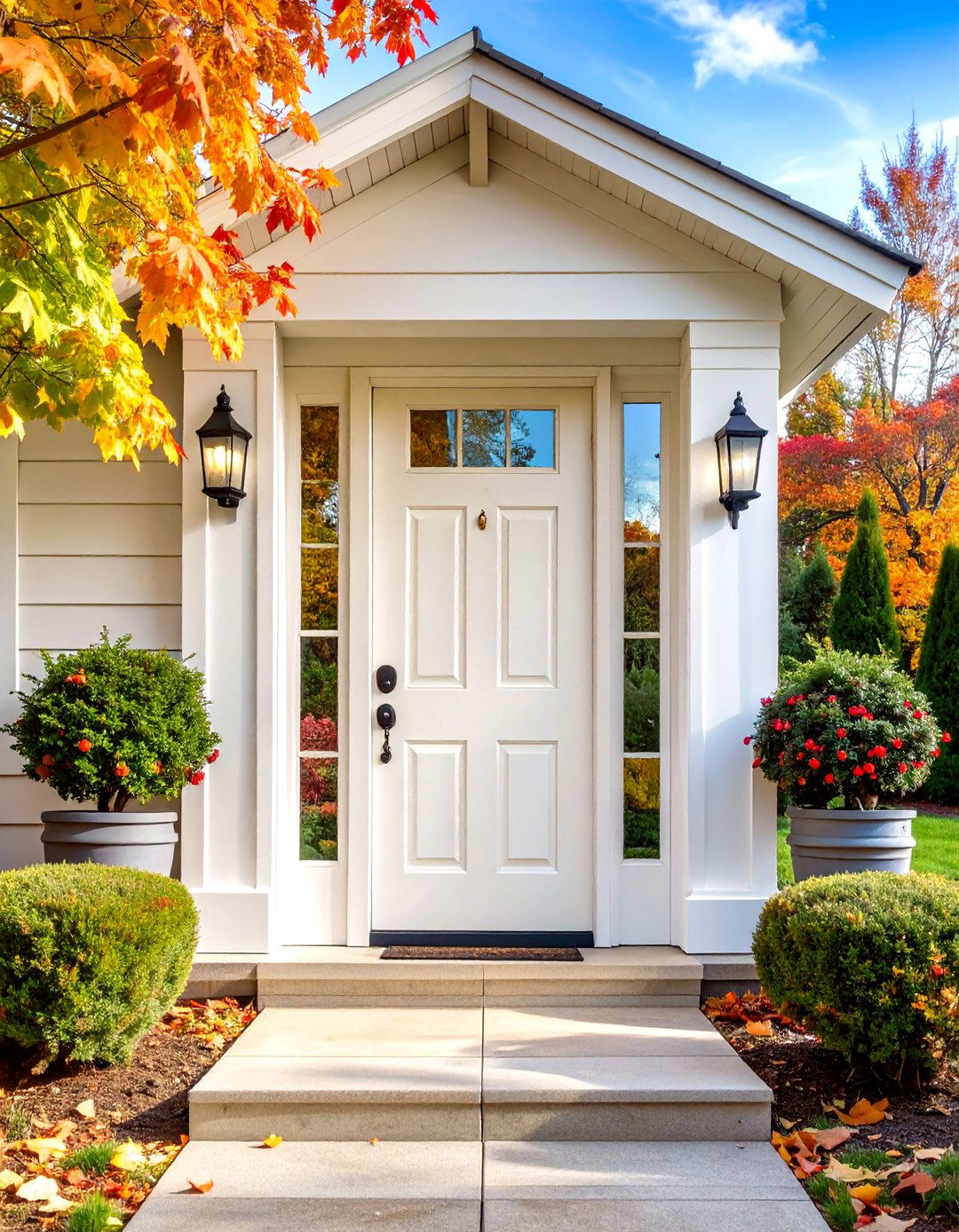
Leave a Reply